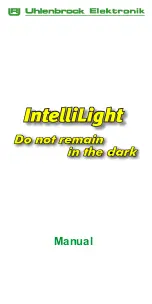
Page 16 of 90
CCT24
before transmitting it. If the message is not completely received by the time the base transmits, the base
will wait until the next hop to transmit the message. The throughput for each remote is:
RemoteSlotSize/HopDuration
In a TDMA mode, the
RemoteSlotSize
is set automatically based on the number of remotes and the
BaseSlotSize
. Note that the base radio always reserves
BaseSlotSize
amount of time in each hop wheth-
er or not the base has user data to send.
To help select appropriate parameter values, RFM provides the
DNT Throughput Calculator
utility pro-
gram (DNTCalc.exe). This program is on the development kit CD. Enabling encryption (security) adds
additional bytes to the data to be sent but the
Calculator
has a mode to take this into account.
2.11.2 Polling Throughput
In polling mode, the application sends data from the base to a specific remote, which causes the remote
and/or its host to send data back to the application. The network operates like a point-to-point network in
this case. In polling, the
HopDuration
should be set just long enough to accommodate a base transmis-
sion up to the limit allowed by the
BaseSlotSize
parameter, plus one remote transmission up to the limit
allowed by the
CSMA_RemtSlotSize
parameter. These slot sizes and the hop duration set the polling
throughput as in TDMA channel access.
The throughput in Polling mode is also determined by the amount of time it takes for the remote host
device to respond to the poll. For example, consider the situation where a remote host device communi-
cates with the CCT24 at 38.4 kb/s, receives a 16-byte poll command, and takes 1 ms to generate a 32-
byte response which it then sends to the CCT24. Sixteen bytes over a UART port is 160 bits using 8,N,1
serial parameters. Sending 160 bits at 38.4 kb/s takes 4.2 ms. Add 1 ms for the host device to process
the command and begin sending the 32-byte response. The 32-byte response takes 8.4 ms to send at
38.4 kb/s, for a total turnaround time of 13.6 ms. This amount of time could be added to the base and
remote slot times to allow the entire transaction to take place in a single hop. However, except at the 38.4
kb/s over-the-air data rate, this is likely to be much longer than the base and remote slot times. Thus, in
practice, lengthening the hop duration to complete the transaction in a single hop doesn’t really affect the
throughput. Nevertheless, it is important to note that the throughput for the remote in the example above
is substantially less than the remote slot size in bytes divided by the hop duration.
It is not a CCT24 requirement that the complete application message be sent in a single hop, nor that the
remote response is returned in a single hop, when in transparent mode. If either transmission occurs over
more than one hop, then depending on the length of the data, the RF data rate and the serial port data
rate at the receiving end, there may be a gap in the serial data. Some protocols, such as Modbus RTU,
use gaps in data to determine packet boundaries.
2.11.3 CSMA Throughput
In CSMA mode, remote radios do not have a fixed throughput, which is why applications requiring guar-
anteed throughput should use polling or a TDMA mode. The reason that the throughput of a CSMA
remote is not fixed is because its ability to transmit at any given time depends on whether another radio is
already transmitting. The throughput of a remote is further affected by how many other remotes are
waiting for the channel to become clear so they can transmit. This is not a problem when remotes, even a
large numbers of remotes, only send data infrequently. The CCT24 includes several configuration param-
eters that can be used to optimize the performance of a CSMA network.
















































